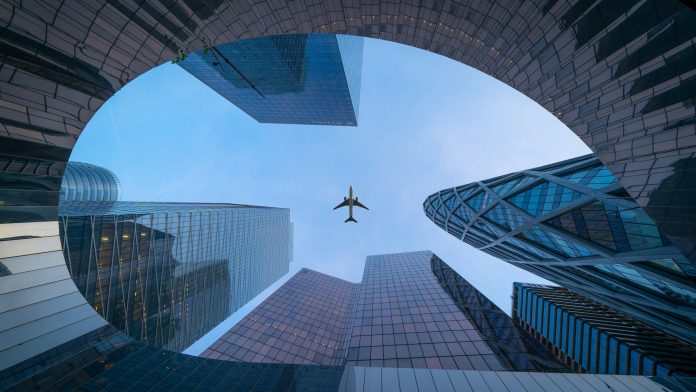The commercial property sectors in both the UK and the US are showing strong signs of recovery, with notable growth in office demand, declining vacancies, and rising rents. This trend underscores a broader recovery in the global CRE market. One driven by evolving workplace strategies and a revitalised emphasis on high-quality and sustainable office environments.
This resurgence is particularly evident in major financial hubs like London and New York City, where the appetite for high-quality office spaces is intensifying.
London Office Market’s Surge in Demand
In London, the demand for premium office spaces has surged, driven by companies seeking to enhance collaboration and attract employees back to the office. This shift has led to a significant decrease in available office spaces in prime locations. For instance, the available stock of offices to let in London is diminishing, especially in The City/Square Mile, with vacancy rates falling to 8.7% in September 2024, down from 9.4% the previous year. This trend underscores the growing competition for top-tier office environments.
The preference for high-quality, energy-efficient buildings is also influencing rental prices. Prime rents in London’s Square Mile have increased by 10% annually, reaching £82.50 per square foot by the end of 2024. This upward trajectory reflects the strong demand for modern office spaces that meet the evolving needs of businesses.
The Big Apple’s Competitive Office Landscape
Across the Atlantic, New York City’s office market is experiencing a similar revival. The demand for high-end office spaces has intensified, particularly in the high-end Midtown and the Financial District/FiDi neighbourhoods. The levels of competition between prospective occupiers is increasing across the pond, too, particularly for the dwindling supply of New York City offices available to rent. This scarcity is leading to higher rents and fewer tenant incentives, especially for Class A office spaces.
Leasing activity in Manhattan has reached impressive levels, with Q1 2025 recording 11.7 million square feet of leased space – the highest first-quarter total since 2018. This surge is largely driven by sectors such as finance, legal, and technology, which are leading the return to in-person work and seeking premium office environments.
Investment Trends and Development Pipeline
Investors are responding to these market dynamics with renewed confidence, and with their focus clearly on high-quality office assets.
In London, investment volumes in city centre office properties totalled £5.2 billion in 2024, marking a 36% year-on-year increase . Similarly, in New York City, major transactions, such as Blackstone’s recent acquisition of a significant stake in the Manhattan office building at 1345 Sixth Ave, signal a strong belief in the long-term value of prime office assets. Healthy leasing activity and rising rents are attracting many investors to NYC’s prime office buildings, and the market is anticipating continued growth in demand.
Property developers are also adapting to the evolving demand by focusing on refurbishing existing stock – sometimes entire buildings – to meet modern structural and aesthetic standards. And the seemingly endless demand from prospective occupiers for prime spaces and buildings.
In the UK, for instance, nearly £3.5 billion worth of underused office space has been acquired between 2022 and 2024, with plans to repurpose these properties for alternative uses as well as office space, including housing and laboratories, depending on the individual regional demands.
Summing Up and Future Outlook
In conclusion, the commercial property markets in the UK and the US are rebounding strongly, with London and New York City leading the way for both countries. The diminishing availability of prime office spaces and the surge in leasing activities underscore a robust recovery, signalling a promising outlook for investors and occupiers alike.
Looking ahead, at least over the near term, it’s likely that both markets will maintain their upward trajectories. The consistent demand for premium office spaces, coupled with limited new supply, suggests that vacancy rates will continue to decline and rents will rise further. Companies prioritizing high-quality, well-located offices to support hybrid work models and employee engagement will likely continue to drive this trend.



 Bitcoin
Bitcoin  Ethereum
Ethereum  Tether
Tether  XRP
XRP  Wrapped SOL
Wrapped SOL  USDC
USDC  Lido Staked Ether
Lido Staked Ether  TRON
TRON  Cardano
Cardano  Avalanche
Avalanche  Toncoin
Toncoin